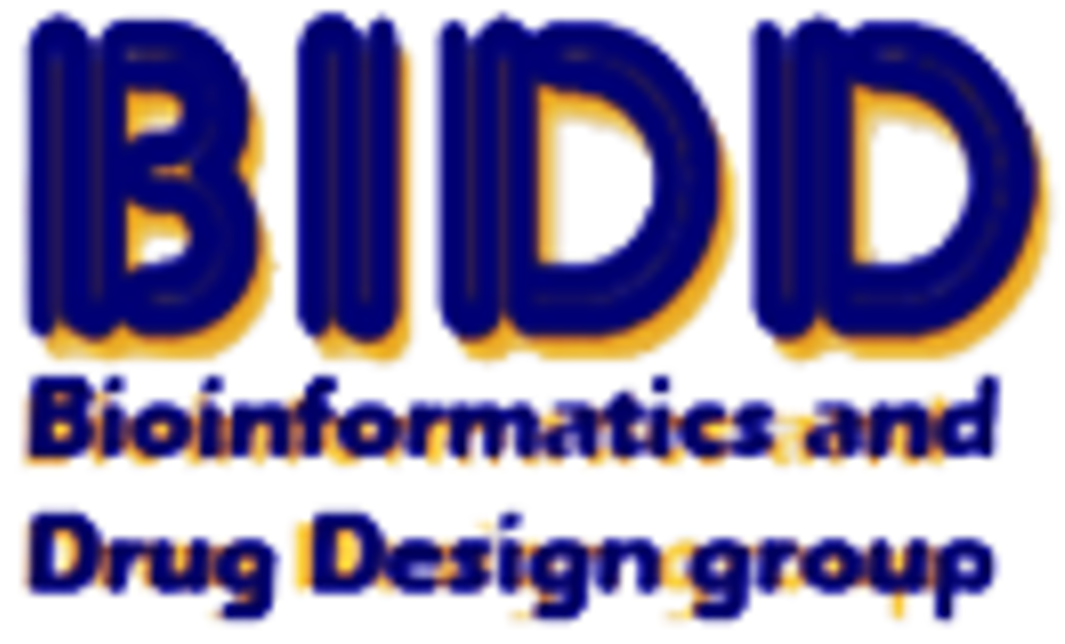| Target Validation Information | |||||
|---|---|---|---|---|---|
| Target ID | T17569 | ||||
| Target Name | Potassium voltage-gated channel subfamily A member 5 | ||||
| Target Type | Successful |
||||
| Drug Potency against Target | 2-morpholino-1,1-di(pyridin-3-yl)octan-1-ol | Drug Info | IC50 = 3357 nM | [530800] | |
| 2-morpholino-1,1-di(pyridin-3-yl)hexan-1-ol | Drug Info | IC50 = 2869 nM | [530800] | ||
| 4-(4-phenoxybutoxy)-7H-furo[3,2-g]chromen-7-one | Drug Info | IC50 = 3450 nM | [531235] | ||
| Dronedarone | Drug Info | IC50 = 10 nM | [552995] | ||
| Azimilide | Drug Info | IC50 = 30 nM | [552601] | ||
| N-Phenethyl-2-(toluene-4-sulfonylamino)-benzamide | Drug Info | IC50 = 6700 nM | [527067] | ||
| 3-(4-methoxybenzyloxy)-2-phenylthiazolidin-4-one | Drug Info | IC50 = 924 nM | [528519] | ||
| N-Benzyl-2-(toluene-4-sulfonylamino)-benzamide | Drug Info | IC50 = 4100 nM | [527067] | ||
| 3-(benzyloxy)-2-(4-chlorophenyl)thiazolidin-4-one | Drug Info | IC50 = 997 nM | [528519] | ||
| Dalfampridine | Drug Info | IC50 = 160 nM | [552399] | ||
| 2-amino-2-phenyl-1,1-di(pyridin-3-yl)ethanol | Drug Info | IC50 = 16390 nM | [530800] | ||
| 3-methyl-2-morpholino-1,1-diphenylbutan-1-ol | Drug Info | IC50 = 3242 nM | [530800] | ||
| 2-phenyl-1,1-di(pyridin-3-yl)ethanol | Drug Info | IC50 = 7107 nM | [530800] | ||
| 2-morpholino-1,1,2-triphenylethanol | Drug Info | IC50 = 204 nM | [530800] | ||
| 2-morpholino-2-phenyl-1,1-di(pyridin-3-yl)ethanol | Drug Info | IC50 = 256 nM | [530800] | ||
| Action against Disease Model | Dronedarone | WT I(HERG) tails, measured at -40 mV following activating pulses to +30 mV, were blocked with IC(50) values of approximately 59 nM of dronedarone (DRONED). I(HERG) inhibition byDRONED was contingent upon channel gating, with block developing rapidly on membrane depolarization, but with no preference for activated over inactivated channels. High external [K(+)] (94 mM) reduced the potency of I(HERG) inhibition by both DRONED | [552467] | Drug Info | |
| The Effect of Target Knockout, Knockdown or Genetic Variations | Activation of microglia by LPS leads to an induction of cytokine and NO release, reduced proliferation and increased outward K(+) conductance, the latter involving the activation of Kv1.5 and Kv1.3 channels. We studied the role of these channels for microglial function using two strategies to interfere with channel expression, a Kv1.5 knockout (Kv1.5(-/-)) mouse and an antisense oligonucleotide (AO) approach. The LPS-induced NO release was reduced by AO Kv1.5 and completely absent in the Kv1.5(-/-) animal; the AO Kv1.3 had no effect. In contrast, proliferation was augmented with both, loss of Kv1.3 or Kv1.5 channel expression. After facial nerve lesion, proliferation rate was higher in Kv1.5(-/-) animals as compared to wild type. Patch clamp experiments confirmed thereduction of the LPS-induced outward current amplitude in Kv1.5(-/-) microglia as well as in Kv1.5- or Kv1.3 AO-treated cells. Our study indicates that induction of K(+) channel expression is a prerequisite for the full functional spectr uM of microglial activation. | [530800] | |||
| References | |||||
| Ref 530800 | Bioorg Med Chem Lett. 2010 Apr 15;20(8):2493-6. Epub 2010 Mar 4.Discovery of triarylethanolamine inhibitors of the Kv1.5 potassium channel. | ||||
| Ref 530800 | Bioorg Med Chem Lett. 2010 Apr 15;20(8):2493-6. Epub 2010 Mar 4.Discovery of triarylethanolamine inhibitors of the Kv1.5 potassium channel. | ||||
| Ref 531235 | Bioorg Med Chem Lett. 2010 Dec 1;20(23):6989-92. Epub 2010 Oct 23.Substituted N-{3-[(1,1-dioxido-1,2-benzothiazol-3-yl)(phenyl)amino]propyl}benzamide analogs as potent Kv1.3 ion channel blockers. Part 2. | ||||
| Ref 552467 | High affinity HERG K(+) channel blockade by the antiarrhythmic agent dronedarone: resistance to mutations of the S6 residues Y652 and F656. Biochem Biophys Res Commun. 2004 Dec 17;325(3):883-91. | ||||
| Ref 552995 | Dronedarone: a novel antiarrhythmic agent for the treatment of atrial fibrillation. Curr Opin Cardiol. 2010 Jan;25(1):53-8. doi: 10.1097/HCO.0b013e32833354e4. | ||||
| Ref 552601 | N-methyl-D-aspartate receptor (NMDA) antagonists as potential pain therapeutics. Curr Top Med Chem. 2006;6(8):749-70. | ||||
| Ref 527067 | Bioorg Med Chem Lett. 2004 Jun 7;14(11):2823-7.Pharmacophore-based search, synthesis, and biological evaluation of anthranilic amides as novel blockers of the Kv1.5 channel. | ||||
| Ref 528519 | Bioorg Med Chem Lett. 2007 Jan 1;17(1):282-4. Epub 2006 Nov 13.Evolution of thiazolidine-based blockers of human Kv1.5 for the treatment of atrial arrhythmias. | ||||
| Ref 527067 | Bioorg Med Chem Lett. 2004 Jun 7;14(11):2823-7.Pharmacophore-based search, synthesis, and biological evaluation of anthranilic amides as novel blockers of the Kv1.5 channel. | ||||
| Ref 528519 | Bioorg Med Chem Lett. 2007 Jan 1;17(1):282-4. Epub 2006 Nov 13.Evolution of thiazolidine-based blockers of human Kv1.5 for the treatment of atrial arrhythmias. | ||||
| Ref 552399 | Estrogen receptor modulators: relationships of ligand structure, receptor affinity and functional activity. Curr Top Med Chem. 2003;3(14):1663-82. | ||||
| Ref 530800 | Bioorg Med Chem Lett. 2010 Apr 15;20(8):2493-6. Epub 2010 Mar 4.Discovery of triarylethanolamine inhibitors of the Kv1.5 potassium channel. | ||||
| Ref 530800 | Bioorg Med Chem Lett. 2010 Apr 15;20(8):2493-6. Epub 2010 Mar 4.Discovery of triarylethanolamine inhibitors of the Kv1.5 potassium channel. | ||||
| Ref 530800 | Bioorg Med Chem Lett. 2010 Apr 15;20(8):2493-6. Epub 2010 Mar 4.Discovery of triarylethanolamine inhibitors of the Kv1.5 potassium channel. | ||||
| Ref 530800 | Bioorg Med Chem Lett. 2010 Apr 15;20(8):2493-6. Epub 2010 Mar 4.Discovery of triarylethanolamine inhibitors of the Kv1.5 potassium channel. | ||||
| Ref 530800 | Bioorg Med Chem Lett. 2010 Apr 15;20(8):2493-6. Epub 2010 Mar 4.Discovery of triarylethanolamine inhibitors of the Kv1.5 potassium channel. | ||||
If You Find Any Error in Data or Bug in Web Service, Please Kindly Report It to Dr. Zhou and Dr. Zhang.

